Here is my benchmark code:
public void test(int copySize, int copyCount, int testRep) {
System.out.println("Copy size = " + copySize);
System.out.println("Copy count = " + copyCount);
System.out.println();
for (int i = testRep; i > 0; --i) {
copy(copySize, copyCount);
loop(copySize, copyCount);
}
System.out.println();
}
public void copy(int copySize, int copyCount) {
int[] src = newSrc(copySize + 1);
int[] dst = new int[copySize + 1];
long begin = System.nanoTime();
for (int count = copyCount; count > 0; --count) {
System.arraycopy(src, 1, dst, 0, copySize);
dst[copySize] = src[copySize] + 1;
System.arraycopy(dst, 0, src, 0, copySize);
src[copySize] = dst[copySize];
}
long end = System.nanoTime();
System.out.println("Arraycopy: " + (end - begin) / 1e9 + " s");
}
public void loop(int copySize, int copyCount) {
int[] src = newSrc(copySize + 1);
int[] dst = new int[copySize + 1];
long begin = System.nanoTime();
for (int count = copyCount; count > 0; --count) {
for (int i = copySize - 1; i >= 0; --i) {
dst[i] = src[i + 1];
}
dst[copySize] = src[copySize] + 1;
for (int i = copySize - 1; i >= 0; --i) {
src[i] = dst[i];
}
src[copySize] = dst[copySize];
}
long end = System.nanoTime();
System.out.println("Man. loop: " + (end - begin) / 1e9 + " s");
}
public int[] newSrc(int arraySize) {
int[] src = new int[arraySize];
for (int i = arraySize - 1; i >= 0; --i) {
src[i] = i;
}
return src;
}
From my tests, calling test() with copyCount = 10000000 (1e7) or greater allows the warm-up to be achieved during the first copy/loop call, so using testRep = 5 is enough; With copyCount = 1000000 (1e6) the warm-up need at least 2 or 3 iterations so testRep shall be increased in order to obtain usable results.
With my configuration (CPU Intel Core 2 Duo E8500 @ 3.16GHz, Java SE 1.6.0_35-b10 and Eclipse 3.7.2) it appears from the benchmark that:
- When
copySize = 24, System.arraycopy() and the manual loop take almost the same time (sometimes one is very slightly faster than the other, other times it’s the contrary),
- When
copySize < 24, the manual loop is faster than System.arraycopy() (slightly faster with copySize = 23, really faster with copySize < 5),
- When
copySize > 24, System.arraycopy() is faster than the manual loop (slightly faster with copySize = 25, the ratio loop-time/arraycopy-time increasing as copySize increases).
Note: I’m not English native speaker, please excuse all my grammar/vocabulary errors.


